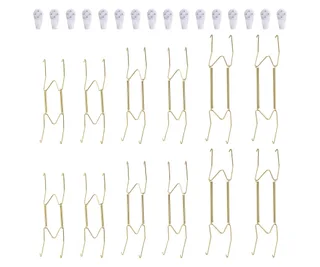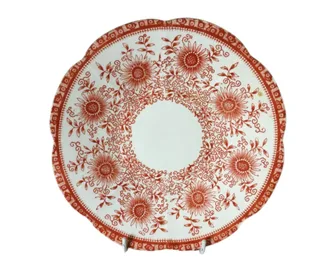I’ve never been much of a host, so whenever I admire a beautiful plate at an op-shop, I usually put it straight back down again, knowing it deserves a more dignified destiny than just gathering dust in the back of my kitchen cupboard. But if you, like me, have scrolled social media for interior decorating ideas lately, you may have noticed that the old-fashioned plate wall is making a comeback, and now I’m suddenly regretting every plate I’ve ever abandoned on some wobbly op-shop trestle table.
When I tell designer and stylist Carlene Duffy of Cedar & Suede that I think plate walls are making a comeback, she politely disagrees. “I don’t think plate walls have ever been out of style,” she says. She’s absolutely right, of course, because the practice of displaying decorative plates on the wall dates back centuries, so the track record of timelessness is pretty solid. “Lately there’s been a bit of a departure from grey and white interiors in favour of a more English-inspired, eclectic influence,” she says. “Plate walls are synonymous with the kind of interior that is ever-evolving and the result of the homeowner being a real collector.”
Here are 6 reasons you need to create a plate wall in your home, with tips from Carlene and founder of statement homewares brand, No.22, Alexandra Pappas.

(Photography: Eleanor Byrne, Tim Salisbury | Styling: Anna Spiro)
1. They’re inexpensive to create
Plate walls make an incredible feature because they’re typically inexpensive to create and many people already have a tidy collection of plates they love, but just never use, sitting in their cupboard. “Plates are one of those things you can easily just grab at a market or an op-shop,” says Carlene. “It doesn’t feel like a big art investment.”
2. You can personalise plate walls to suit your taste
If you build a collection of plates slowly, the plate wall you create is pretty much guaranteed to be entirely unique. This is a huge drawcard, especially at a time when people are really celebrating individualised interiors, says Alexandra.
“People want the things they display in their home to be customised and personal, rather than stock standard. Beautiful and unique plates are an easy way to inject your own personality and taste in your home without completely renovating or buying new furniture.”

3. They can add dimension to an existing gallery wall
If you’ve ever created a gallery wall, you may have experienced a difficult-to-explain sensation that something just looks flat. Switching up the style of frames and re-jigging the layout may help, but sometimes you need to think outside the box.
“Art is typically either square or rectangular, so if you feel like you’ve got enough of that happening in your gallery wall, plates are a nice departure from that,” says Carlene.
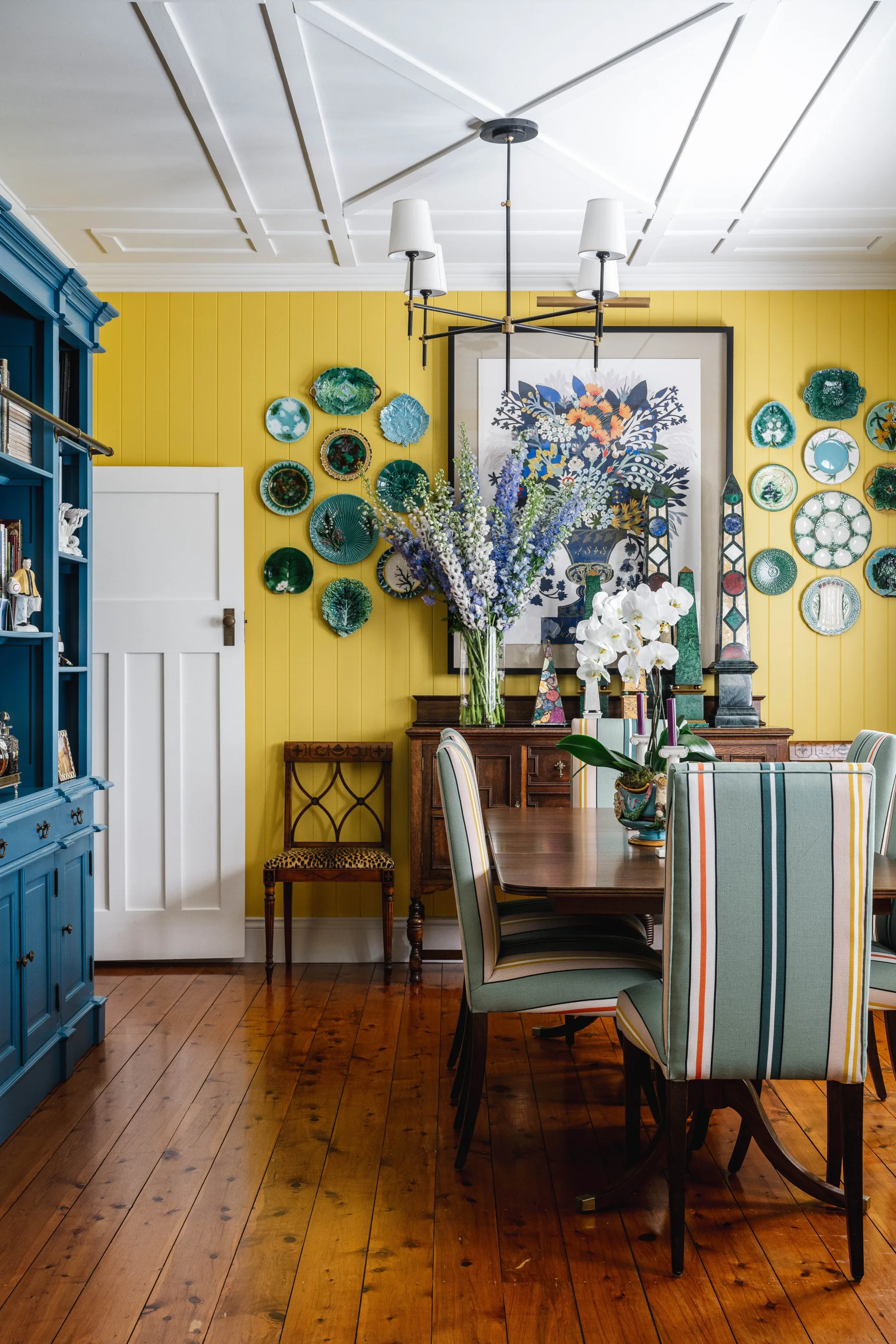
4. There are no rules – collect plates your eyes are drawn to
“Don’t hold yourself to any rules, because that takes the fun out of it,” says Carlene. So when you’re browsing an op-shop, makers market or a department store, buy plates that you’re just drawn to.
“You could be drawn to the colour, or happen to love a particular print, it could be that it’s something hand-painted or something that’s printed, it could be English bone china or Japanese ceramics. Plate walls are great because you can bring together what you like and add and subtract as you go.”
How to choose decorative plates for a wall
- Consider whether you want the plates to match or look more eclectic. Some designers love working with blue-and-white china, for example, while others prefer to mix and match different patterns.
- Avoid generic, mass-produced plates where possible. Alexandra recommends looking for styles that are hand-painted or feature unique patterns or motifs.
- Think about your colour story. While clashing colours and patterns can definitely work, selecting plates that have a common colour can make the overall effect appear more cohesive.
- Be inspired by the style of your home. If you love the wabi-sabi look, for example, opt for Japanese ceramics. If your home leans more ‘cottagecore’ or ‘urban aunt’ look for plates in classic colours and patterns.
5. They make sense pretty much anywhere
Think plate walls are reserved solely for the kitchen or dining room? Think again. “Plate walls make sense in any room of the house,” says Alexandra. “As our homes become more multi-dimensional and multipurpose, so are the ways we are styling our homes. Throw out the traditional rulebook!”
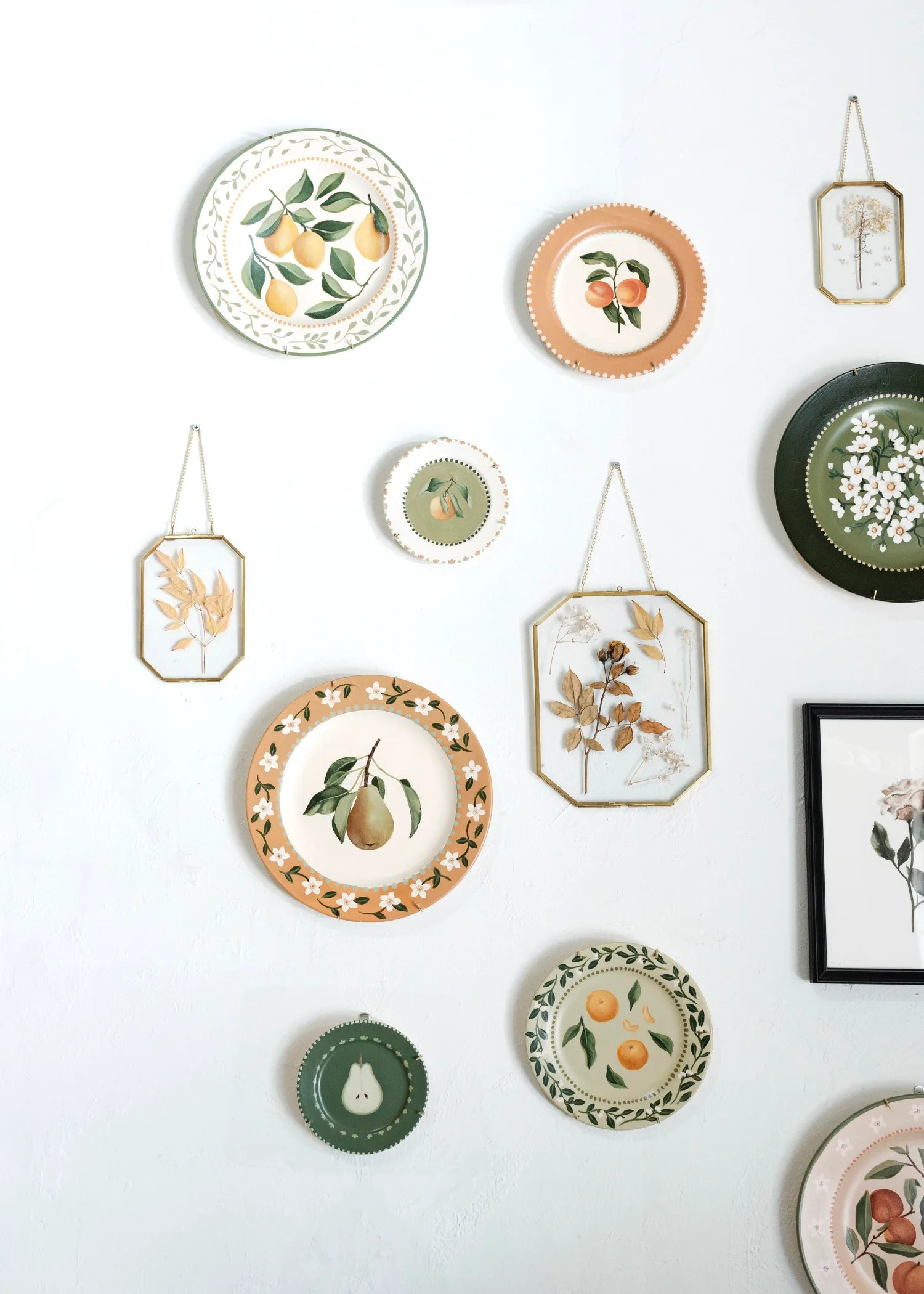
Unexpected places to display plates
- Above a door frame
- Above a plastered, integrated range hood
- In a bathroom where the walls are only partially tiled
- In a vignette behind a comfy armchair
- As part of a stairwell or hallway gallery wall
- In a home office
6. They can evolve over time
Can’t decide which plates to display and which to use for dining? “Why can’t you do both?” says Alexandra. Plates attached to the wall with an adjustable wire rack are easy to switch out as you please. “You can use your plates one week and hang them the next,” says Alexandra.
Carlene also loves the sense of controlled randomness a plate wall can add to a room. “Plate walls are just one of things that can evolve over time because they’re asymmetrical and a bit hap-hazard and you can add to it whenever you like. It’s a nice way for your wall to evolve.”

Today’s plate walls tend to favour a more organic layout as opposed to a rigid, perfectly-spaced grid. To get your layout right, Carlene recommends placing the plates on the floor and seeing what works well together. “You can add and subtract if a pattern or colour just isn’t working,” she says. “But definitely lay them out before you commit.”
Alexandra says to start with the plate you love the most and arranging the other plates to support it. “Use your favourite plate to guide how to choose and place other pieces, whether they’re matching or completely different,” she says.
How to get the right plate wall layout
How to hang decorative plates on a wall
Carlene says there are two main ways to attach plates to the wall. The first is the Safe N Sure Invisible Disc Plate Hanger which is essentially a big sticker that attaches to the back of the plate and allows you to hang it from a wall hook. The second is the Safe N Sure Traditional Wall Hanger which has an adjustable spring-loaded rack that can fit a range of plate sizes.
No matter which method you choose, says Carlene, “Make sure you get plate holders that are appropriate for the weight and diameter of the plate, because I’ve had a few accidents.”
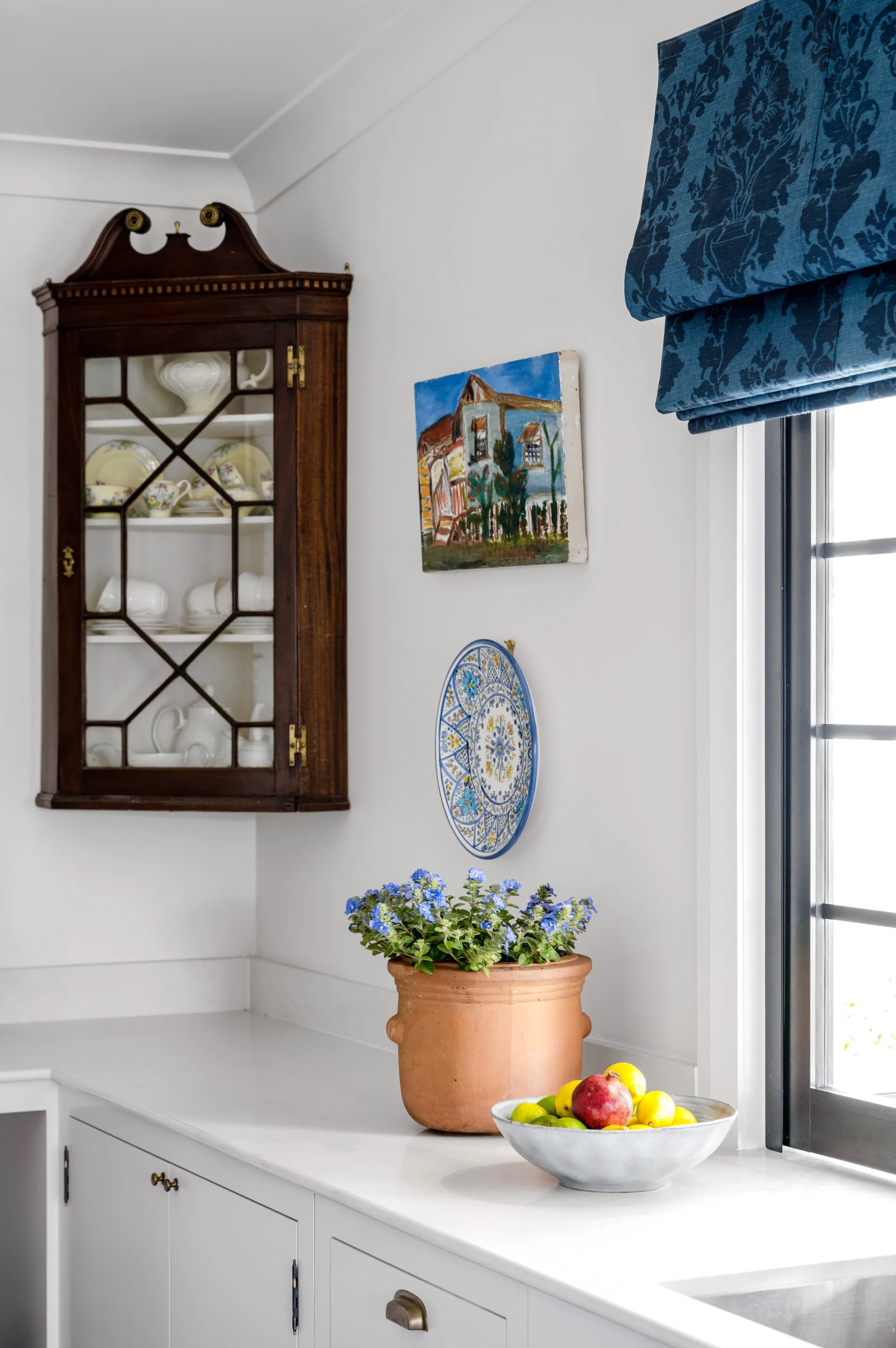
 Photography: Hannah Puechmarin / Styling: Hayley Jenkin
Photography: Hannah Puechmarin / Styling: Hayley Jenkin












